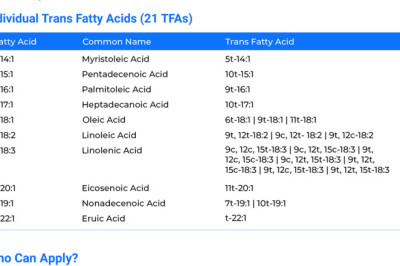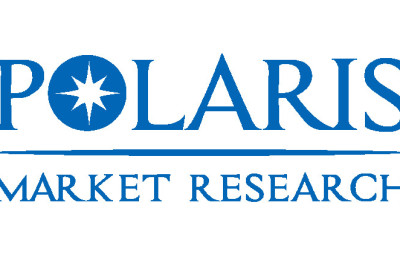views
Global Next Generation Sequencing Market size and share is currently valued at USD 9.90 Billion in 2024 and is anticipated to generate an estimated revenue of USD 43.42 Billion by 2032, according to the latest study by Polaris Market Research. Besides, the report notes that the market exhibits a robust 20.3% Compound Annual Growth Rate (CAGR) over the forecasted timeframe, 2024 - 2032
NGS, widely considered one of the most powerful tools in molecular biology, enables the high-throughput sequencing of DNA and RNA. The technology has drastically reduced the cost of genome analysis and made it accessible for a wide range of applications in healthcare, agriculture, environmental studies, and biotechnology.
Market Overview
NGS technology has become essential for applications such as whole genome sequencing (WGS), targeted sequencing, transcriptome analysis (RNA-Seq), and epigenomics. The rapid adoption of NGS in clinical diagnostics — including oncology, infectious diseases, and reproductive health — is accelerating growth. Additionally, the deployment of advanced bioinformatics tools for data interpretation is closing the gap between raw sequencing data and clinical decision-making.
NGS is enabling a paradigm shift from reactive to predictive and personalized medicine. It empowers clinicians to diagnose diseases earlier, stratify patients based on genetic profiles, and identify optimal therapies — all while making sequencing more scalable and cost-effective.
Market Segmentation
The global NGS market can be segmented by product type, technology, application, and end-user.
By Product Type
-
Instruments
-
Consumables
-
Library Preparation Kits
-
Software and Services
Consumables dominate the market share due to repeated purchases required for each sequencing run, particularly in high-throughput clinical labs.
By Technology
-
Whole Genome Sequencing (WGS)
-
Whole Exome Sequencing (WES)
-
Targeted Sequencing
-
RNA Sequencing
-
Chip-Seq and Methyl-Seq
WGS is gaining popularity for its comprehensive genomic insights, while targeted sequencing remains preferred for clinical diagnostics due to its cost efficiency and precision.
By Application
-
Oncology
-
Infectious Diseases
-
Reproductive Health
-
Genetic Disorders
-
Agrigenomics
-
Forensics
Oncology is the largest application segment, where NGS is used for tumor profiling, mutation detection, and monitoring therapy resistance.
By End-User
-
Hospitals and Clinics
-
Research Institutions
-
Biotechnology and Pharmaceutical Companies
-
Diagnostic Laboratories
Research institutions lead in adoption, though clinical diagnostic labs are quickly gaining share due to the increasing clinical utility of NGS.
Browse Full Insights:
https://www.polarismarketresearch.com/industry-analysis/next-generation-sequencing-ngs-market
Country-wise Market Trends
United States
The U.S. remains the most mature NGS market globally, driven by deep-rooted research infrastructure, high healthcare spending, and a robust biotech sector. Programs like the All of Us Research Program and widespread payer coverage for genomic tests are reinforcing demand.
-
Key Trends: Growth in cancer liquid biopsies, expanding newborn screening programs, and regulatory clarity from the FDA for companion diagnostics.
-
Adoption Drivers: Presence of major players like Illumina and Thermo Fisher Scientific, clinical trial growth, and integration of bioinformatics tools.
China
China is rapidly catching up due to significant government funding, large-scale population genomics initiatives, and the rise of homegrown genomics companies like BGI and MGI Tech.
-
Key Trends: Surge in prenatal genetic testing, growing precision oncology market, and agricultural genome research.
-
Government Push: The “China Precision Medicine Initiative” and investments in local NGS technology development.
Germany
Germany is leading Europe’s NGS market with strong focus on rare disease diagnostics, academic research, and industrial biotech applications.
-
Key Trends: Integration of NGS in personalized oncology treatment, strong adoption in university hospitals, and expansion of genetic counseling services.
-
Challenges: Data privacy and GDPR compliance concerns around large genomic datasets.
Japan
Japan has significantly scaled up its NGS capabilities, particularly for geriatric healthcare and infectious disease genomics.
-
Key Trends: Integration of NGS into cancer care under public insurance, expansion of microbial genomics research, and AI-powered NGS analytics.
-
Innovation Edge: The Tohoku Medical Megabank and government-funded WGS initiatives are fueling growth.
India
India is emerging as a high-potential NGS market, supported by growing healthcare digitization and public-private initiatives in genomics.
-
Key Trends: Affordable diagnostic panels for inherited diseases, increased use in tuberculosis and antimicrobial resistance studies.
-
Limitations: Infrastructure constraints and high initial investment costs still pose adoption challenges outside metro areas.
Brazil
Brazil is the largest NGS market in Latin America, driven by local genomics companies and demand for rare disease and oncology diagnostics.
-
Key Trends: Rising application in agricultural biotechnology and pathogen surveillance, with growing research funding from the Ministry of Health.
-
Opportunities: Collaborations with international genomics consortia are helping overcome tech barriers.
United Kingdom
The UK’s NGS market is backed by the 100,000 Genomes Project and expanding clinical use cases through the NHS Genomic Medicine Service.
-
Key Trends: Increasing integration of NGS into NHS pathology labs, rapid NGS adoption in pediatric and prenatal diagnostics.
-
Public Funding: Government investments in AI-based NGS interpretation and rare disease databases.
Key Companies
Several global and regional players are shaping the competitive landscape of the NGS market, each bringing unique innovations to hardware, chemistry, and data analysis.
1. Illumina, Inc.
Illumina leads the global NGS market, offering end-to-end solutions from benchtop sequencers to high-throughput systems like NovaSeq X. The company has also expanded into AI-powered interpretation tools through acquisitions such as Grail.
2. Thermo Fisher Scientific
With its Ion Torrent platforms, Thermo Fisher caters to clinical diagnostics, oncology, and microbiology. The company emphasizes flexibility, automation, and regulatory-compliant sequencing kits.
3. Pacific Biosciences (PacBio)
PacBio specializes in high-accuracy long-read sequencing. The company's Sequel IIe platform is widely used in genomics research where structural variation and phasing are crucial.
4. Oxford Nanopore Technologies
Oxford Nanopore offers real-time portable sequencers (MinION, PromethION) enabling field-based genomics. Its technology is prominent in infectious disease tracking and point-of-care genomic research.
5. BGI Genomics
BGI is a key player in Asia, offering low-cost sequencing services and proprietary DNBSEQ platforms. BGI collaborates with global research initiatives and contributes to genomic databanks.
6. QIAGEN
QIAGEN provides sample prep kits, panel-based NGS solutions, and bioinformatics tools like CLC Genomics Workbench. It has strong partnerships for companion diagnostics.
7. Roche Sequencing
Roche is advancing liquid biopsy and oncology-focused sequencing with AVENIO assays. The company continues to develop automated workflows and integrated analytics.
8. Agilent Technologies
Agilent supports NGS labs with its SureSelect target enrichment products and NGS automation systems. It also offers software for clinical interpretation of variants.
Conclusion
The global Next Generation Sequencing market is set for transformative growth, underpinned by innovations in DNA sequencing technologies, expanding adoption of personalized medicine, and growing global focus on precision diagnostics. As countries invest in genomic infrastructure and public health genomics, NGS is becoming a core part of healthcare, research, and agriculture.
Key companies are rapidly expanding portfolios to meet demand across geographies, while startups are bringing niche innovations in bioinformatics tools and point-of-care sequencing. Despite challenges around data interpretation, regulation, and infrastructure, the NGS ecosystem continues to evolve—driven by one of the most exciting frontiers in science and medicine.
More Trending Reports by Polaris Market Research:
Cell Banking Outsourcing Market
Cardiac Rhythm Management Devices Market
Myasthenia Gravis Disease Market
Blood Glucose Monitoring Device Market
Medical Telepresence Robots Market
Personalized Medicine Biomarkers Market
Top 10 Companies in Hospital Information System Software Market to Know in 2025
Top 20 Companies Market Driving Innovation in Prefilled Syringes Market 2025




















Comments
0 comment